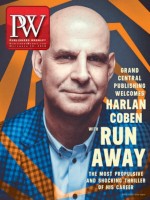Recently, I’ve been spending about as much time working in the music industry as I do in book publishing. That wasn’t the case a few years ago. Why? Quite frankly, it’s because, after many years of decline and stagnation, the music industry is an exciting place once again. I’ve heard many publishing people write off the music industry as dead and/or irrelevant, but that’s no longer valid. If publishers look carefully, they can learn valuable lessons from the music industry.
One of the most important lessons is that the music industry has returned to growth by dramatically changing its offerings from products to services. Though record labels didn’t exactly engineer this change, they enabled and supported it.
Of course, that wasn’t always the case. When users started sharing digital music files online in the late 1990s, the industry decided to fight the practice rather than embrace it. The conventional wisdom for many years was that the record labels blew it: they were too reactionary, too afraid to embrace digital, too eager to protect their existing CD business. They should have made deals with Napster and other file-sharing networks by allowing them to sell licensed MP3 files rather than trying to impose requirements for DRM encryption or sue such networks out of existence.
Yet this conventional wisdom turned out to be wrong. The major record labels eventually licensed DRM-free digital downloads. But as a product category, downloads were only popular for a few years; now they are headed for the scrap heap of history alongside eight-track tapes.
But that doesn’t mean that record labels were right all along, either. Streaming music services such as Apple Music, Spotify, and YouTube dominate the music industry now, but during the Napster era, few saw streaming as the next big thing; it was a little experiment that started around 2001 and took place off to the side for the ensuing 10 years. Yet, last year, streaming music services accounted for almost two-thirds of music industry revenue, and streaming revenue is still rising rapidly—whereas digital file downloads were down to 15% of revenue (from a peak of 43% in 2012) and are still shrinking.
Growth in streaming revenue turned the music industry around starting in 2016. While music revenue is still far below its 1999 peak, it’s growing at accelerating rates now, and the end of streaming’s dominance is nowhere in sight.
A superficial lesson here is that no one values things (DRM-free digital music files) that are very easy to copy and send to millions of others. The deeper lesson for publishers is that digital products won’t succeed if they are designed solely as digital facsimiles of physical products.
Yet that’s exactly what e-books are and have been for over a decade. We’ve all heard various explanations for the fact that e-book sales have fallen far short of the wildly optimistic projections of the early 2010s—the most popular being that people prefer reading hard copies to reading from screens and that prices are too high.
But that’s not the entire picture. E-books have their advantages, such as portability and searchability, but their disadvantages compared to print books tend to stick out in readers’ minds. A digital facsimile has to have all of the features of the product it purports to emulate, which is often impossible, or it’s a failure. (One of the rare successes has been PDF, a digital facsimile of print documents that has been amazingly resilient since its release 25 years ago.)
The music industry got out of its slump by eschewing digital facsimiles in favor of an entirely new type of offering—one that really takes advantage of digital networks and devices without calling much attention to physical products. For years, no one really understood streaming music services: they resembled neither record stores (as download services such as Apple iTunes did) nor radio stations (as services such as Pandora did). But consumers eventually caught on, thanks to the massive popularity of YouTube—actually the most popular streaming music service in the world—and the hype surrounding Spotify’s U.S. launch in 2011.
Does this mean that trade book publishing needs to support $10 per month subscription plans with access to near-universal catalogues? Not necessarily; music and book consumption habits are different. But trade book publishing has to encourage and facilitate innovation beyond the digital facsimile to enable future offerings that will lead to the kind of growth that the music industry is once again enjoying.
PS: Trade publishers need not even look to music to see why digital facsimiles are dead ends. Magazine publishers tried them in the early to mid-2000s and have largely abandoned them. More recently, educational and professional publishers are succeeding with nonfacsimile models, such as Cengage’s subscription service for college students, Cengage Unilmited, which launched this fall.
Bill Rosenblatt is president of GiantSteps Media Technology Strategies and a founding partner of Publishing Technology Partners.



 Volume 265
Issue 50
12/10/2018
Volume 265
Issue 50
12/10/2018





